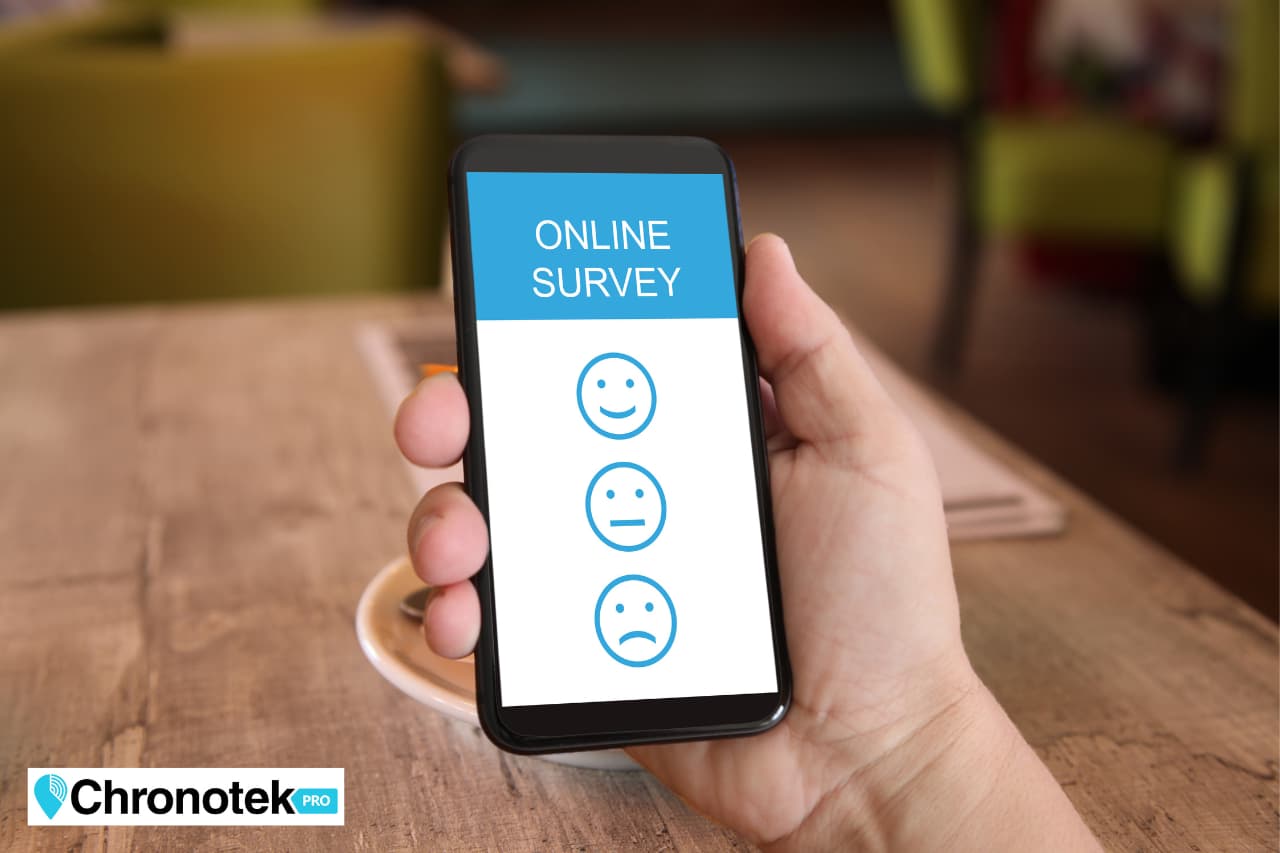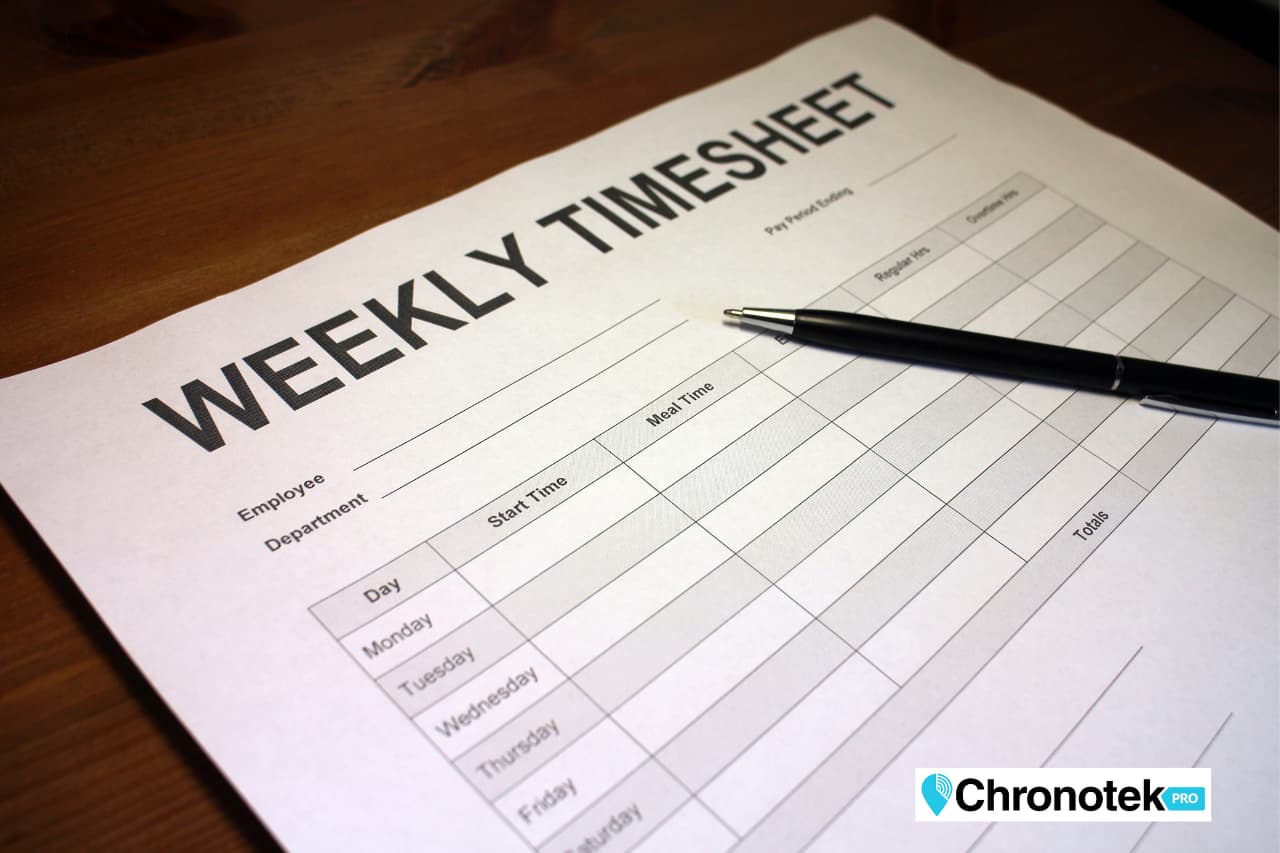Boost Brand Loyalty: 9 Ways to Improve Customer Retention

How does Apple command a remarkable 90% customer retention rate, with iPhone owners 21 times less likely to switch brands than Samsung owners? You'll want to know the answer, and we will discuss Apple throughout this article, but the company knows retaining customers is more crucial than ever, especially in competitive markets. Every customer you keep is one you don't have to spend money to acquire. Keeping customers is the secret sauce that helps businesses thrive, ensuring long-term success and profitability.
But how can you harness the power of effective retention strategies and keep your customers returning for more? In this blog post, we’ll focus on customer retention strategies that help you foster loyalty, satisfaction, and repeat business. Additionally, we'll discuss retention metrics that should be a part of your efforts.
Short Summary
-
Businesses should prioritize customer retention to increase profits, boost purchase amounts, improve customer relationships, and acquire new customers.
-
Effective strategies such as personalization, exceptional service, loyalty programs, and memorable experiences can help improve success.
-
Monitoring performance metrics & studying case studies are essential to continuous improvement in customer retention & satisfaction.
Table of Contents:
- Understanding Customer Retention
- Why Is Customer Retention Important For Businesses?
- Measure Customer Retention: 12 Key Metrics for Service Companies
- 9 Strategies to Keep Customers Happy
- Monitoring and Adapting Your Customer Retention Strategy
- Summary
Understanding Customer Retention

Customer retention fosters relationships with existing customers to promote loyalty and repeat business using proven strategies. Customer satisfaction, which positively impacts customer retention, is essential for the long-term success of a business. For instance, 92.6% of iPhone users plan to stick with Apple for their next phone, compared to 74.6% of Samsung users.
Customer success teams are pivotal in enhancing customer retention as they engage and delight customers, bolstering and sustaining retention rates in concert with other groups within the organization. Furthermore, brand ambassadors, who are long-term customers that effectively promote the business through positive word of mouth, significantly contribute to customer retention and reduce the need for customer acquisition.
Understanding and adopting effective customer retention strategies is vital for businesses, as it allows them to maintain a solid customer base, increase revenue, and foster growth. By building customer relationships, collecting customer feedback, and providing exceptional customer experiences, businesses can improve customer retention and ultimately achieve success.
Why Is Customer Retention Important For Businesses?

Retaining customers is essential for three primary reasons - it's less expensive to keep customers than to gain new ones; existing customers spend more than new ones; and loyal customers are word-of-mouth brand ambassadors. We'll look at each.
Loyal Customers Are the Most Cost-Effective
Focusing on customer retention is vital because you'll spend less money keeping customers than getting new ones. Getting new customers costs 6-7 times more than keeping existing ones. Also, loyal, long-term customers will often pay a premium to keep doing business with you instead of switching to an unfamiliar competitor.
Chick-fil-A understands the economics of customer loyalty. They can afford to pay store operators 2-3 times the industry average, attracting top talent, which helps another major problem across industries - employee turnover. At least 75% of employees leave voluntarily due to lousy management.
New customer acquisition is costly in every industry, reaching $1000 per customer. A start-up commercial cleaning business with a $500-a-month marketing budget can afford to acquire 5 new customers at $100 each. Then, they must focus on keeping them.
Loyal Customers Spend More Than New Ones
Another reason customer retention efforts are vital is that retaining customers lead to higher average purchase amounts and improved profits. In the commercial cleaning business, current customers spend 67% more than new ones, and a 5% rise in customer retention rates can lead to a 25-95% increase in profits.
Additionally, in the commercial cleaning industry, acquiring a new customer costs 5-9 times more than selling to an existing one. The likelihood of selling to an existing customer ranges from 60% to 70%, while the probability of selling to a new prospect falls between 5% and 20%. And as long-term customers buy more, your operating costs to serve them decline because they need less support.
A glance into the world of online shopping sheds more light on the spending habits of loyal customers. Customers spend more with online retailers as time passes. In apparel, the average repeat customer spent 67% more in months 31-36 of their shopping relationship than in months zero-to-six. The study found a similar trend in grocery shopping: customers spent 23% more in months 31-36 than in months zero-to-six. Online shoppers are similar to offline. Customers come back because of good experiences.
Loyal Customers Are Free Word-of-Mouth Brand Ambassadors
An overwhelming 92% of buyers trust recommendations from friends, family, and peers more than any other form of marketing. What is the first thing most people do when hiring a plumber, mechanic, or doctor? They ask their friends and family, of course. And what do you do when you experience excellent customer service? You tell your friends and family!
Every word-of-mouth referral you receive is a customer you don't have to spend money to acquire. Every referral saves you almost $800 in marketing costs if you're a real estate professional. In consumer electronics and appliances, a first-time customer referred four people; by their tenth purchase, they had referred 13 people.
The financial benefit of referrals goes beyond marketing savings. In one study over three years, customers referred by electronics shoppers spent 50% more than the person who referred them.
By prioritizing customer retention strategies and measuring their effectiveness, businesses can reduce new customer acquisition costs, increase revenues, and build strong brand loyalty. Let's discuss measuring techniques.
Measure Customer Retention: 12 Key Metrics for Service Companies

You measure what matters, and hopefully, we've shown that customer retention efforts matter. Measuring customer retention involves several metrics, and it's essential to understand them because the results will guide your efforts. Let's quickly go through each one.
1 - Customer Retention Rate (CRR): refers to the percentage of customers a business successfully retains over a specific period. The formula to calculate customer retention rate is Customer Retention Rate = (# Customers at the End of a Period - # of New Customers Acquired During the Period) / # of Customers at the Start of the Period) x 100.
Let's imagine that a video streaming company had 10,000 paying customers at the beginning of the year (January 1st); it acquired 2,000 new customers during the year. At the end of the year (December 31st), they had 11,500 customers still actively subscribed.
CRR = ((11,500 - 2,000) / 10,000) x 100 = 95%
2 - Customer Acquisition Cost (CAC): measures the average cost incurred by a business to acquire a new customer. The formula is Total Sales and Marketing Expenses / Number of New Customers Acquired.
3 - Repeat Purchase Rate (RPR): calculates the percentage of customers who make more than one purchase from a company during a specific period. A higher repeat customer rate signifies that customers are more likely to call you again.
4 - Purchase Frequency: refers to the average number of times a customer purchases from a business within a specific period, typically measured in a month or a year.
5 - Average Order Value (AOV): measures the average amount customers spend per order.
6 - Customer Lifetime Value (CLV): represents the total revenue a business can expect to generate from a customer throughout their relationship. Understanding CLV helps prioritize high-value customers and tailor retention efforts accordingly.
7 - Revenue Churn Rate: measures the percentage of lost revenue from existing customers over a specific period. Are customers ordering less? Have they cut back on services? Either case can signal your customer is on the verge of leaving.
8 - Existing Customer Revenue Growth: the rate your business generates revenue from existing customers. An important metric as a rising rate indicates customers are happy with your product or service.
9 - Service Agreement Renewal Rate: this metric measures the percentage of customers who renew their agreements for companies offering service or maintenance contracts. A high renewal rate indicates strong customer loyalty.
10 - Service Completion Time: measures the average time to complete a service request or job. Faster service completion times can lead to higher customer satisfaction and contribute to improved retention.
11 - Upsell and Cross-Sell Rate: This metric tracks the percentage of customers who purchase additional services or products beyond their initial request. An increasing upsell and cross-sell rate can increase customer lifetime value and retention.
12 - Net Promoter Score (NPS): measures customer loyalty and the likelihood of customers recommending a company to others. You determine the NPS by asking your customer: "How likely are you to recommend our company to a friend or colleague?" The customer responds with a number between 0 and 10. Only 9s and 10s are promoters, and scores of 6 or less are considered detractors.
Being aware of your customer retention rate and other vital metrics assists in assessing the effectiveness of your retention strategy and informs your decision-making. We'll discuss how companies use some of these metrics throughout the article.
9 Strategies to Keep Customers Happy

Once you've measured key points in your customer's journey, it's time to create a customer retention strategy. We'll discuss a few strategies, and each plays a vital role in addressing different aspects of customer relationships and satisfaction, ultimately contributing to the overall success of a business’s retention efforts.
The following subsections will delve deeper into these strategies, providing examples and insights to help businesses effectively understand and implement these proven customer retention approaches.
1 - Get Better Customers with Lead Qualification
Lead qualification or lead scoring is the process of categorizing and prioritizing leads based on the likelihood they will purchase. It uses information about the lead to determine if and when they will likely convert into a sale. The steps to qualify a lead are assessing the customer and their needs, ensuring purchasing ability, gauging activity, and identifying potential challenges.
Lead qualification is essential to efficient marketing because you can waste your budget on unproductive efforts, attracting the wrong customers. Vanguard, a leading mutual fund company, rejected a $40 million investor because they suspected the investor would churn the account, creating extra costs for their existing customers.
Focus on acquiring the right customers, and you'll spend less money and time supporting them.
2 - Build Customer Loyalty Through Personalization
Personalization creates a relevant, individualized interaction for customers to enhance their experience. Companies that excel in personalization earn 40% more revenue from these efforts than their competitors. Additionally, an overwhelming 71% of consumers expect personalized service, and an even higher proportion, 76%, are frustrated when they don't receive it.
A survey revealed personalization efforts consumers consider essential. Here are a few (the numbers are % of respondents):
75% - Make it easy for me to navigate in-store and online
67% - Give me relevant product/service recommendations
66% - Tailor messages to my needs
65% - Offer me targeted promotions
58% - Follow up with me after the purchase
51% - Engage and onboard me when I buy for the first time
Chick-fil-A understands the power of personalization. Their mobile app allows you to save a store as a favorite; choose drive-thru, carry-out, curbside, or dine-in; save favorite meals; and see recent orders. Chick-fil-A also emails you an end-of-the-year report highlighting your favorite order, the number of rewards points accumulated and redeemed, and ends with a happy message saying you were the favorite part of their year. It's a great way to remind customers why they enjoy eating at Chick-fil-A.
Personalization will encourage customers to remain engaged with your company instead of looking elsewhere.
3 - Foster Happy Customers with Exceptional Service

Top-notch customer service can help resolve issues, exceed customer expectations, and foster long-term loyalty. Ensuring timely and helpful customer service, promptly responding to customer complaints, apologizing when you're wrong, and expressing gratitude for their business are all effective strategies for providing exceptional customer service.
Zappos is well-known for sending customers thank-you cards and surprise gifts, keeping a monthly tally, and sharing across teams. Unsurprisingly, their company purpose is "to live and deliver WOW."
Businesses can build trust and loyalty by consistently providing exceptional customer service and exceeding customer expectations. These efforts will increase customer retention and drive profits. According to a survey, 61% of businesses report that most of their revenue comes from repeat customers.
4 - Use Feedback Loops to Enhance Customer Satisfaction
Amazon's Jeff Bezos said, “At Amazon [they] innovate by starting with the customer and working backward. That becomes the touchstone for how we invent.” You can't debate Amazon's success.
Collecting and acting on customer feedback can help identify areas for improvement and enhance overall customer satisfaction. Apple uses Net Promoter Score (NPS) surveys to find unhappy customers and improve its retail store experience. They analyze the survey comments daily and follow up with customers who score 6 or lower. Store managers personally call the dissatisfied customers within 24 hours to discuss their issues and ask what needs improvement. Apple found that these detractors became bigger buyers than customers who scored higher than six, and this simple feedback loop generated over $25 million in additional annual revenue.
Customer Advisory Boards, comprised of loyal customers who offer feedback and suggestions to enhance products and services, are valuable sources of customer feedback. They keep you connected to customer experience, driving sales growth. One study revealed that sales grew 66.8% after creating an advisory board versus 22.9% before launching one.
Beta testing groups, which offer valuable customer feedback and help maintain customer engagement with new features being tested, are another essential feedback mechanism. We used beta testing groups extensively when building and launching our GPS time-tracking app for remote employees. Feedback from the field is critical when developing a new product or service. Consider "customer co-creation" to involve customers in creating new products, services, or experiences.
By actively gathering and incorporating customer feedback into their products and services, businesses can continuously improve and adapt to meet customer needs and expectations, increasing customer satisfaction and retention.
5 - Establish Trust and Loyalty to Gain Repeat Customers

Establishing trust with customers through transparency, consistency, and delivering on promises can lead to increased loyalty and retention. Amazon and Apple rank in the top 3 most loved brands for Gen Xers and Baby Boomers. Amazon is in the top five for Millennials, Gen X, and Baby Boomers. Every generation survey stated that Amazon has improved their lives and has become ingrained into their daily behavior.
But you don't have to be Amazon or Apple to win the trust and loyalty game. Brands that connect with consumers' emotions establish higher levels of trust and outperform top companies listed on the S&P 500 and Fortune 500 in revenue and profit.
By building trust and customer loyalty, businesses can foster long-lasting customer relationships and improve retention rates.
6 - Develop a Loyalty Program to Increase Customer Retention
Creating a loyalty program enhances customer retention by providing incentives for repeat purchases and acknowledging the loyalty of dedicated customers. Rewards could include free merchandise, coupons, or insider perks like early access to new products. Offering rewards is a solid business strategy, as successful companies have more than customers. They have loyal customers who enjoy participating in loyalty programs because it cultivates a sense of exclusivity and community.
A well-designed customer loyalty program has benefits beyond customer retention. Research shows that top-performing loyalty programs increase revenue by 15-25% annually. "Top-performing" is key, as two-thirds of loyalty programs fail to deliver or erode value.
Service companies with monthly contracts, like commercial cleaners, may struggle to develop an effective loyalty program, but they can adopt other customer retention strategies. Sending thank you cards, gift cards, and coupons for add-on services are a few ideas. Try performing an extra service for free with a follow-up card or email to let your client know with a coupon for future services.
Businesses can foster long-term loyalty and improve customer retention rates by creating and implementing a customer loyalty program that rewards customers for their continued patronage. And your most loyal customers will become your most vocal brand ambassadors.
7 - Educate and Empower to Enhance Your Customer Retention Strategy
Customer education is providing customers with the necessary resources, tools, and support to help them succeed and, in turn, build long-term loyalty. Customer education also informs your clients about products, solutions, and services they may need to be made aware of to reach your offerings' full potential.
Most consumers look online for solutions to their problems. Don't shy away from offering free advice. A plumbing company with a blog article about how to unclog a drain demonstrates goodwill and may get the call for more complicated issues.
HubSpot Academy is an excellent example of a successful customer education program. HubSpot provides comprehensive education on marketing, sales, customer service topics, and customer self-service tools, such as a knowledge base and a community forum. Successful customer educational programs like HubSpot Academy also build brand authority as a trusted source in the industry.
What should you include in a customer education program? According to Spark and Co., you could have the following elements: built-in help with articles, videos, and walk-throughs; a knowledge base; live webinars(no more than 45 minutes); self-paced on-demand e-learning; an online community; certificate programs; podcasts; and user groups.
By offering educational resources and support to customers, businesses empower them to succeed and foster long-lasting loyalty and retention.
8 - Create Memorable Experiences to Boost Customer Retention
Make customers feel special by surprising and delighting them with unique experiences. Being remarkable instills good vibes and encourages repeat business. Send a surprise gift or offer an unexpected benefit, especially on Get to Know Your Customers Day—a quarterly event observed on the third Thursdays of January, April, July, and October. Such efforts stir positive emotions in customers, creating a feeling of obligation in the customer to reciprocate the kindness. Customers spend more, purchase more frequently, and refer their friends and family.
Robert Cialdini, author of the landmark book, Influence: The Psychology of Persuasion, said, "We are obligated to give back to others, the form of behavior that they have first given to us. There's not a single human culture that fails to train its members in this rule." Chewy is a company that uses the concept of reciprocity. They send customers unexpected gifts and cards for their pets.
Apple is dedicated to delivering an extraordinary customer experience, investing a remarkable $1 billion annually in its retail stores, in addition to maintaining online stores.
By crafting unique and memorable customer experiences, businesses can leave lasting impressions that encourage repeat business, motivate word-of-mouth marketing, and foster long-term loyalty.
9 - Use Chronotek Pro’s GPS Time Tracking App to Keep Customer’s Happy

Companies with remote employees like commercial cleaners, security guards, lifeguards, plant merchandisers, and all field service workers use Chronotek Pro to track time. The GPS time-tracking app helps companies with mobile employees deliver customer excellence and measure retention in many ways:
-
Capture accurate time at each customer location for precise billing
-
Monitor and measure service completion time for quality control
-
Receive no-show alerts when employees don't show up to jobs. The easiest way to turn customers sour is to have them waiting on a field tech who never shows up
-
Provide customers with reports showing when your remote employees were in and out of their buildings
-
Measure Customer Lifetime Value, Existing Customer Revenue Growth, and Revenue Churn Rate by tracking labor costs against revenue
-
Store customer service agreements and track contract renewal dates
Automating your employee time-tracking is one of the easiest ways to ensure customer satisfaction. A GPS time-tracking app also provides a way to use many metrics to track customer retention we’ve discussed.
Monitoring and Adapting Your Customer Retention Strategy

I gave you twelve metrics to monitor and measure customer retention, but if you're new to this concept, don't get overwhelmed. Start with a couple - calculate your customer retention rate and acquisition costs, which are fundamental to establishing a baseline. Then decide what remaining metrics are most important for your business and industry and monitor them regularly.
Regularly tracking retention metrics and adjusting strategies based on performance can help optimize customer retention efforts and drive continuous improvement. Every Chick-fil-A store operator can see on the store computer their standing relative to all operators in terms of sales, sales growth, and profits. Stores that fall into the bottom 15-20% get extra attention from company consultants, and they double customer surveys. This hyper diligence on performance also benefits their store operator turnover rate, which is 5% compared to the fast-food industry standard of 35-40%.
It is essential to consistently monitor retention metrics such as customer retention rate, repeat purchase rate, customer acquisition costs, and customer lifetime value to optimize retention initiatives and ensure ongoing improvement. The purpose of the numbers is to give you the right information to make vital decisions. Keeping customers and getting more customers is the name of the game.
Summary
In conclusion, customer retention matters and is the cornerstone of sustained business success. Businesses can foster loyalty, satisfaction, and repeat business by focusing on effective strategies such as personalization, exceptional service, loyalty programs, and building trust with customers. Always collect customer feedback and prioritize customer success. The power of increasing customer retention lies in its cost-effectiveness, increased customer spending, and the creation of valuable word-of-mouth brand ambassadors. Companies can maximize ROI, boost profits, and secure their position in competitive markets by continually measuring and improving customer retention efforts, ensuring long-term growth and prosperity.
One of the best ways a company with remote employees can get started measuring and monitoring customer retention is with Chronotek Pro's automated time-tracking system.
Conclusion
In conclusion, implementing effective strategies to boost brand loyalty is essential for businesses seeking to increase their customer retention rates and sustain long-term success. The nine proven strategies outlined in this guide offer a comprehensive framework for building strong relationships with customers and fostering loyalty to the brand. From delivering exceptional customer service and personalized experiences to implementing loyalty programs and seeking feedback, these strategies focus on creating positive interactions and emotional connections that keep customers coming back. Additionally, prioritizing transparency, consistency, and reliability in product quality and communication reinforces trust and reinforces the brand's value proposition. By consistently implementing these strategies, businesses can cultivate a loyal customer base that not only generates repeat business but also serves as brand advocates, driving growth and success in the competitive marketplace.
By embracing these solutions, you can simplify payroll processes, reduce administrative burdens, eliminate time theft, and minimize costly mistakes. Invest in an automated time clock system to save time and money while ensuring accurate and efficient payroll calculations. With the right tools and processes, you can focus on more strategic aspects of your business and watch your profits grow.




